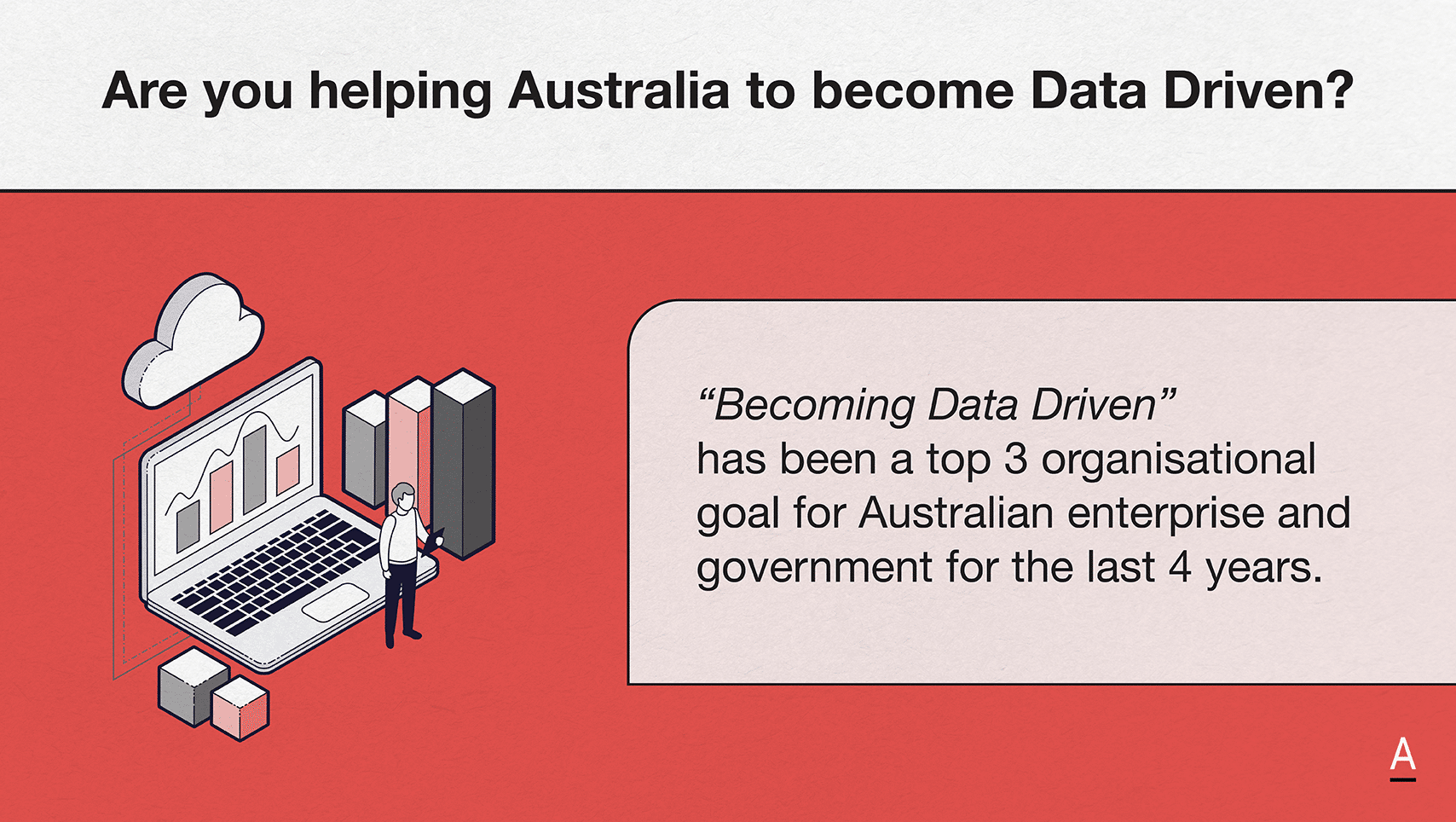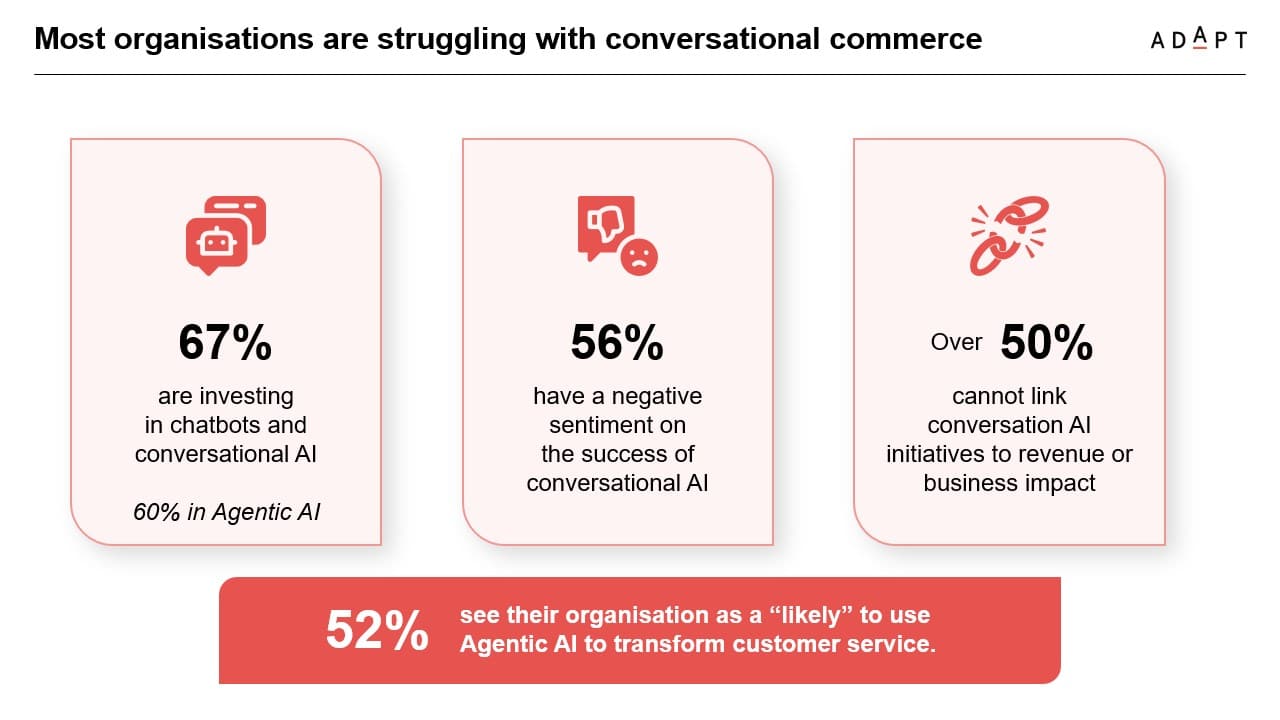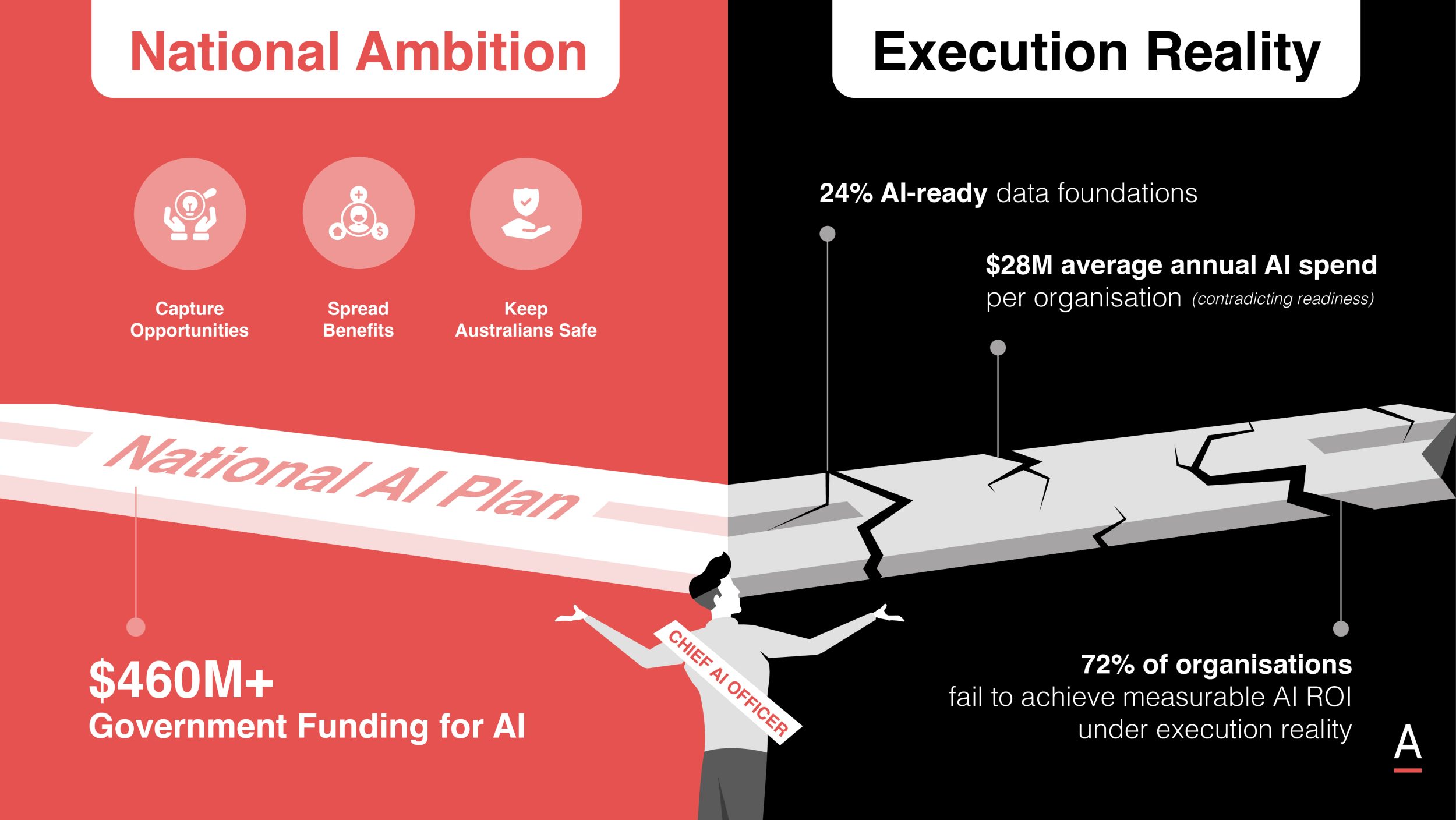Learn how tech providers can help data and AI leaders overcome readiness gaps and move from experimentation to real AI execution at scale.
AI ambition is accelerating across Australia’s enterprise landscape, but most organisations are not equipped to act.
Only 24% of data and digital leaders believe their data is ready to support AI use cases.
At ADAPT’s July 2025 Analyst Market Briefing, Gabby Fredkin, Head of Analytics and Insights, shared findings from surveys of over 300 Chief Data, AI, and Digital Officers.
These leaders represent organisations responsible for more than 30% of national GDP and 13% of the workforce.
While AI is being embedded into products, services, and customer journeys, execution is stalled by poor data quality, fragmented platforms, low enterprise literacy, and fragile governance.
The session outlined how these barriers are limiting impact and where tech providers can play a decisive role in bridging readiness gaps and enabling real AI delivery.
Digital transformation has shifted from reinvention to control
Many Australian enterprises are still structured for predictability rather than agility.
This is evident in their transformation programs.
In 2025, only 46% of surveyed organisations reported meaningful progress in digitisation and automation, down from 50% in 2024.
CIOs continue to prioritise back-office modernisation such as ERP and CRM upgrades, which follow long 2 to 5 year cycles and delay value realisation.
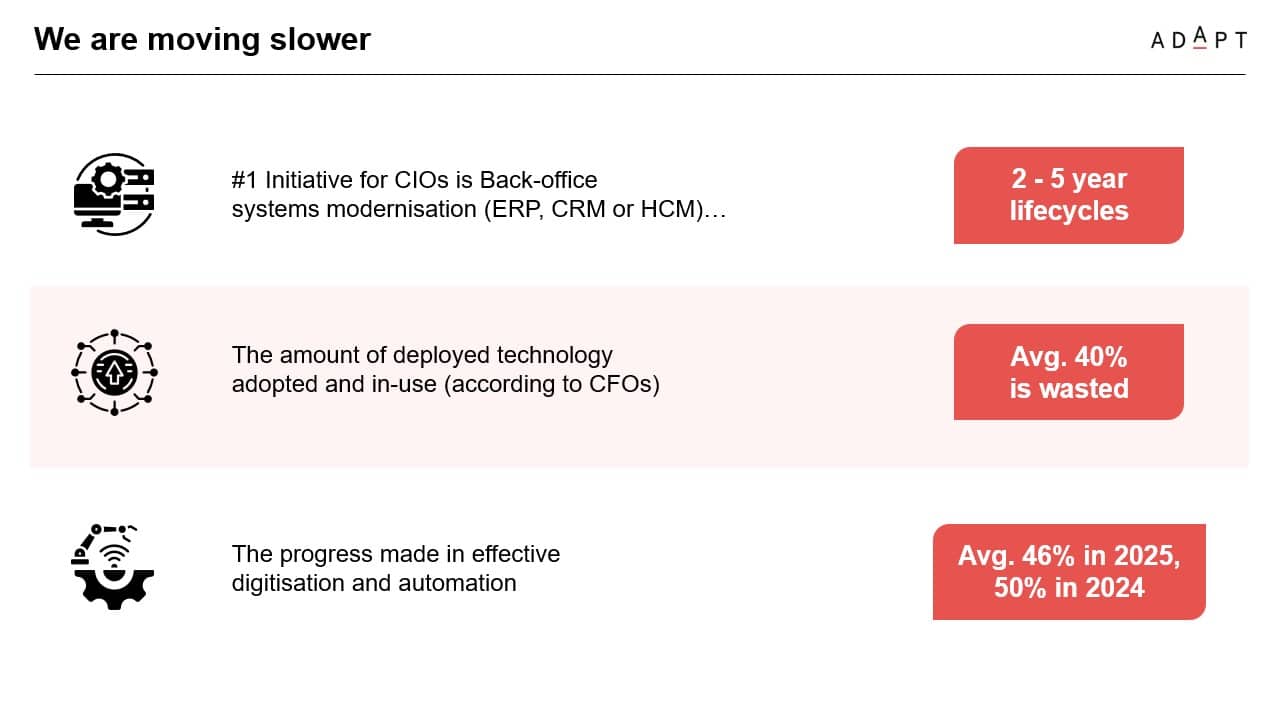
CFOs report that 40% of currently deployed technology is wasted or underutilised.
This signals a disconnect between business case development and post-purchase adoption.
As a result, transformation outcomes remain marginal and fragmented.
This stagnation is showing up most visibly in customer-facing functions.
When asked about their organisation’s ability to use data to improve customer experiences, 80% of Chief Data Officers rated their capability as poor or moderate.
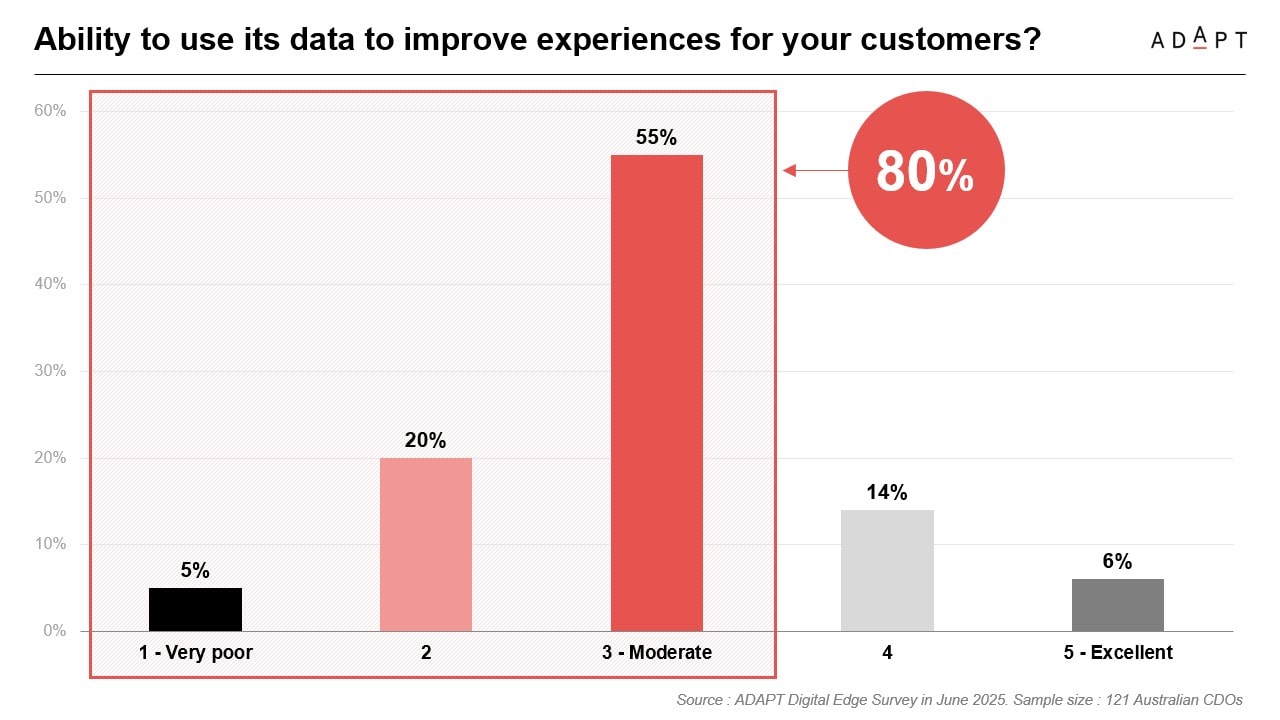
This low maturity directly correlates with the effectiveness of transformation efforts at the edge of the business, where customer expectations are highest.
More transformation programs need to be anchored in clear value delivery to end users, not internal operational metrics alone.
AI deployments are still clustered in low-impact use cases
Despite growing investment, AI deployments remain concentrated in tasks that carry minimal operational risk.
Administrative and document-related work continues to dominate, while only 17% of enterprises have applied AI to strategic decision-making or pricing.
These low-risk use cases reflect a broader hesitation to push AI into areas that require executive sponsorship, mature data governance, and integrated workflows.
Most organisations lack the structures to embed AI into decisions that carry financial, reputational, or compliance risk.
The clearest execution gap is in conversational AI.
While 67% of enterprises have deployed chatbots, 56% report negative performance sentiment.
Few can trace outcomes back to revenue, cost savings, or customer value.
As Gabby Fredkin noted, many of these deployments are still owned by innovation teams or rolled out in isolation.
Without strong adoption support or clarity on business value, they fail to scale beyond pilots.
Structural inertia is the true barrier to AI execution
The biggest challenges are not in model performance or tool availability.
They lie within the organisation.
Approval delays, disconnected systems, and siloed execution remain top blockers.
Gabby emphasised that most enterprises are not investing in enterprise-wide fluency.
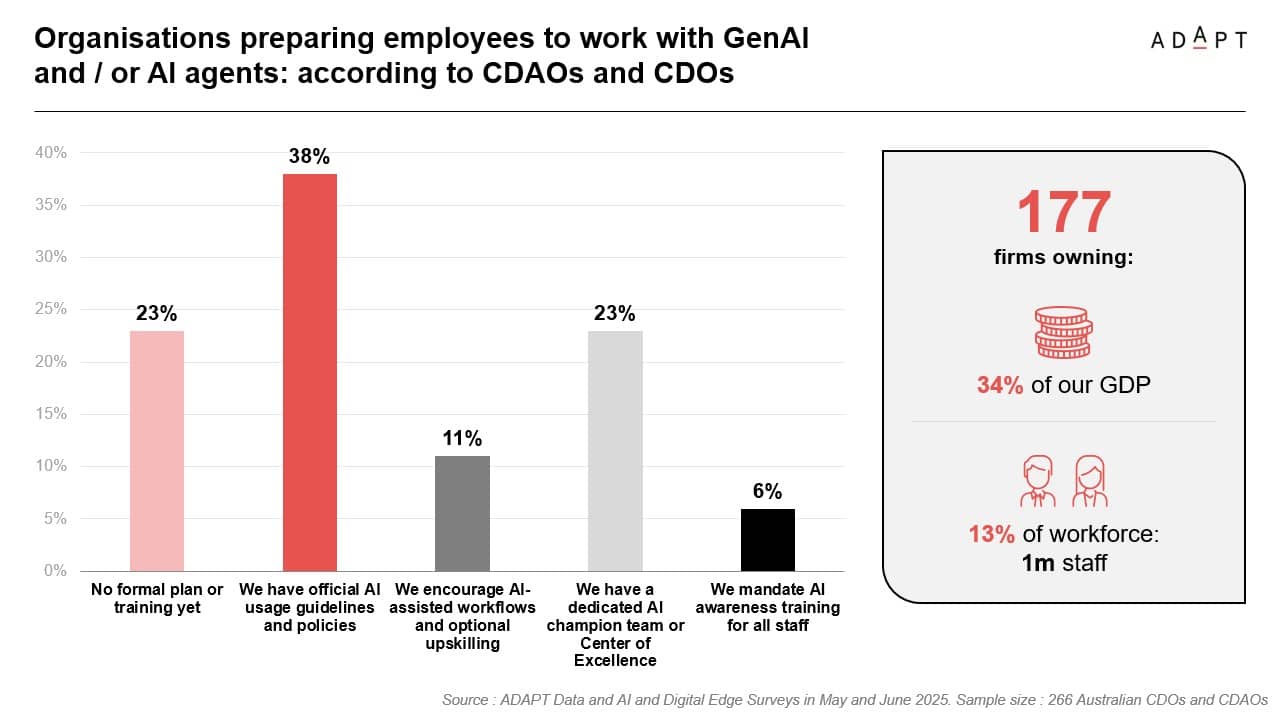
Only a small number mandate AI training, and internal policies often focus on risk rather than enablement.
As a result, confidence in using AI remains low, especially beyond IT or analytics teams.
Decentralised ownership models, such as AI champions or internal Centres of Excellence, are showing stronger results.
But these approaches are not yet the norm.
Most teams remain dependent on centralised governance, which slows responsiveness and prevents scalable rollout.
Execution suffers when teams lack the mandate or maturity to act.
Data maturity is not keeping pace with ambition
Enterprises report reasonable progress in data infrastructure, but their ability to turn data into trusted insight is lagging.
Gabby noted that over 70% of enterprise data is considered redundant or low-value.
This volume obscures what matters and clogs delivery pipelines.
Only a minority of organisations report maturity in unifying customer data or aligning data strategy with business priorities.
Governance frameworks remain inconsistent, and frontline users still lack access to contextually relevant information.
Without accessible, high-quality, and well-governed data, even well-funded AI initiatives risk underdelivering.
The issue is less about tooling and more about operational alignment, business ownership, and stewardship discipline.
Agentic AI remains misunderstood and underutilised
While many leaders believe agentic AI could transform service delivery, practical deployment remains limited.
Gabby shared that most teams are still unsure how to define agent behaviour, evaluate performance, or integrate agents into broader workflows.
This uncertainty is driven by both technical and cultural gaps.
Few organisations have standardised architectures that can accommodate autonomous tools.
Even fewer have the governance maturity to assign accountability to non-human actors.
Until vendors help demystify these concepts and connect them to business outcomes, agentic AI will remain aspirational.
Recommended actions for tech vendors
Enterprise leaders are motivated to move AI from experimentation to production, but most face internal barriers across governance, readiness, and capability.
To support execution maturity, vendors must look beyond product delivery and address structural and behavioural blockers:
- Support clients in building clear value frameworks. Ensure that AI and automation initiatives begin with defined success metrics tied to business impact
- Prioritise enablement over evangelism. Offer structured training, adoption workshops, and hands-on upskilling for business units
- Anchor AI use case development in business problems that can be solved with available data. Avoid positioning AI as a standalone innovation layer
- Address data maturity selectively. Focus on improving the quality and accessibility of the specific datasets required for priority use cases
- Provide clarity and simplification around agentic AI. Break down abstract concepts into workflow-level use cases that demonstrate tangible benefits
- Engage cross-functional stakeholders, including operations, customer teams, and internal governance leads, to build trust and shared accountability
- Help organisations transition from project-based to product-aligned delivery models. Reinforce continuous iteration and embedded ownership
AI ambition alone is no longer enough
Enterprise leaders are adjusting course.
They are moving away from exploratory pilots toward structured delivery.
Success will require demand clear roles, consistent data practices, and confident execution.
Vendors who invest in these realities will be best positioned to guide Australian enterprises through the operationalisation of AI.
Not with hype, but with sustained, measurable progress.
Access the full webinar recording to learn what data and digital leaders are prioritising for FY25–26 investment.




